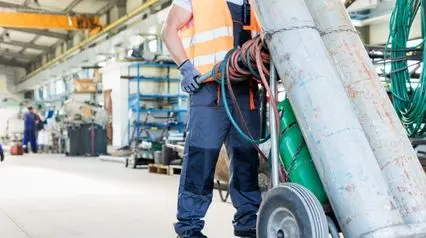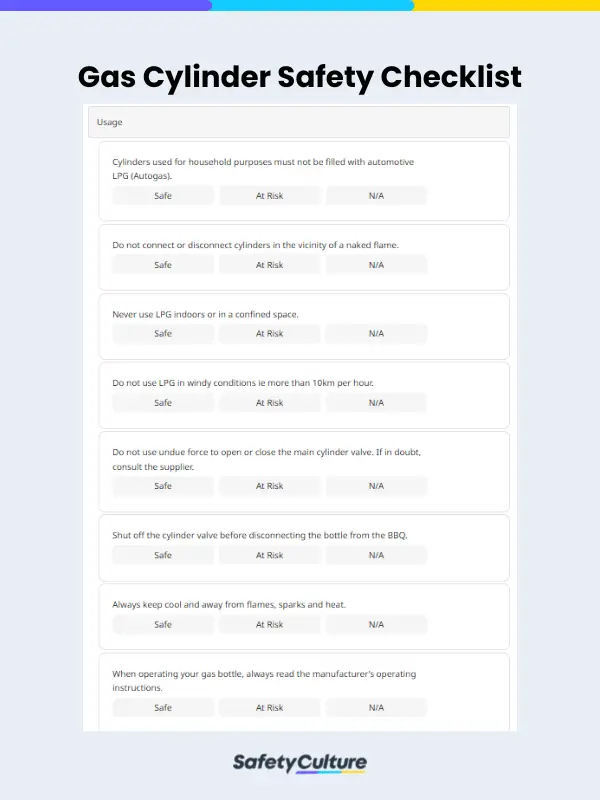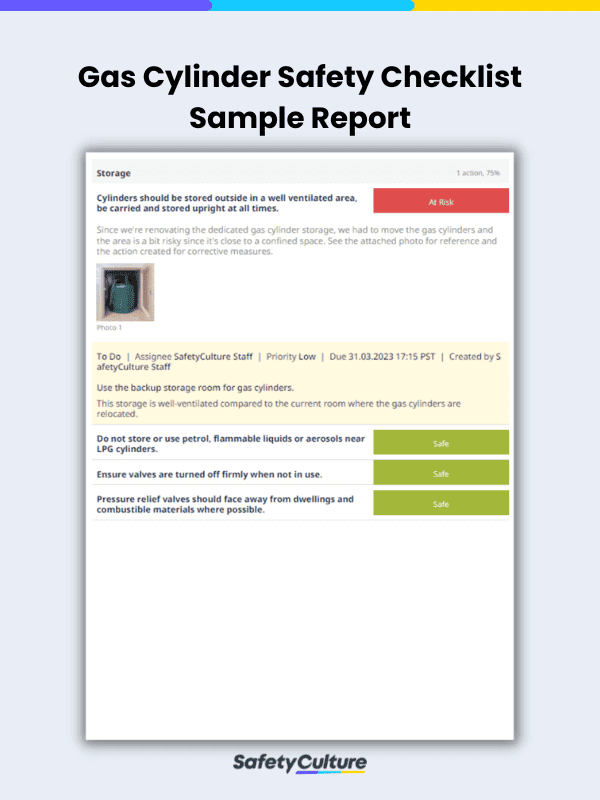What is a Gas Cylinder Safety Checklist?
A gas cylinder safety checklist is a tool used to outline a series of safety checks that should be carried out on gas cylinders to ensure they are safe to use. The checklist typically includes items such as checking the cylinder for damage, ensuring the valve is in good condition, and verifying the contents of the cylinder.
Importance
Gas cylinders are pressurized containers used to store and transport various types of gases such as oxygen, nitrogen, propane, and acetylene. They are widely used in a variety of industries, including healthcare, manufacturing, and construction. Despite their importance, gas cylinders can be very dangerous if not handled with care and caution.
Due to the potential for severe consequences, it’s essential to follow safety procedures when dealing with them. One way to implement safe handling is to create and use a gas cylinder safety checklist.
By doing so (and regularly reviewing and updating it), you can help ensure that you’re taking all necessary precautions to prevent accidents and injuries when using, storing, transporting, and maintaining it. In addition, it’s important to be aware of gas cylinder safety regulations and standards set forth by governing bodies and to ensure that you’re in compliance with them.
What to Include in One
To help and guide you in creating it, a gas cylinder safety checklist should at least include the following items:
- Title page containing inspection or audit details such as the document number, audit title, inspector name, date, and location
- Inspection of cylinders for leaks
- Proper storage and transportation of cylinders, including securing them during moving and turning valves off when not in use
- Completion page for the sign-off
How to Create a Gas Cylinder Safety Checklist
Creating a gas cylinder safety checklist involves the following steps:
- Identify the hazards associated with gas cylinder handling. This can be done by reviewing safety regulations, manufacturer instructions, and incident reports.
- Once the hazards have been identified, the next step is to evaluate the risks associated with each hazard. This involves determining the likelihood and severity of each potential risk.
- Based on the hazards and risks identified, develop safety procedures. These should be comprehensive and include guidelines for handling, storing, and transporting cylinders. In the workplace, you can also display safety symbols relevant to these processes.
- Using the safety procedures developed, create a checklist that outlines the steps for safely handling gas cylinders. The checklist should be easy to understand and use so that the process of inspecting gas cylinders can be standardized and streamlined.
- Train employees on the safety procedures and the process of using the checklist to ensure they understand the Standard Operating Procedures (SOPs). Also, ensure that the hazards are communicated to everyone in the organization.
FAQs About Gas Cylinder Safety Checklists
Anyone who handles gas cylinders should use a gas cylinder safety checklist. This includes people who work in industries such as welding, laboratory work, and medical facilities, as well as individuals who use gas cylinders for hobbies or home repairs.
Gas cylinder safety checklists should be used every time a gas cylinder is handled or moved. This includes when the gas cylinder is first received, when it’s being stored, and when it’s being used. This way, safety measures can be strictly enforced, and risks can be minimized.
Here are some tips to help you effectively identify potential hazards and risks when handling gas cylinders:
- Review safety regulations from relevant authorities.
- Consult with gas cylinder manufacturers to understand the specific hazards and risks associated with handling their products.
- Conduct a risk assessment to pinpoint hazards and risks specific to your sites and workplace.
- Review incident reports to help you understand the most common and recurring incidents faced by your employees.




